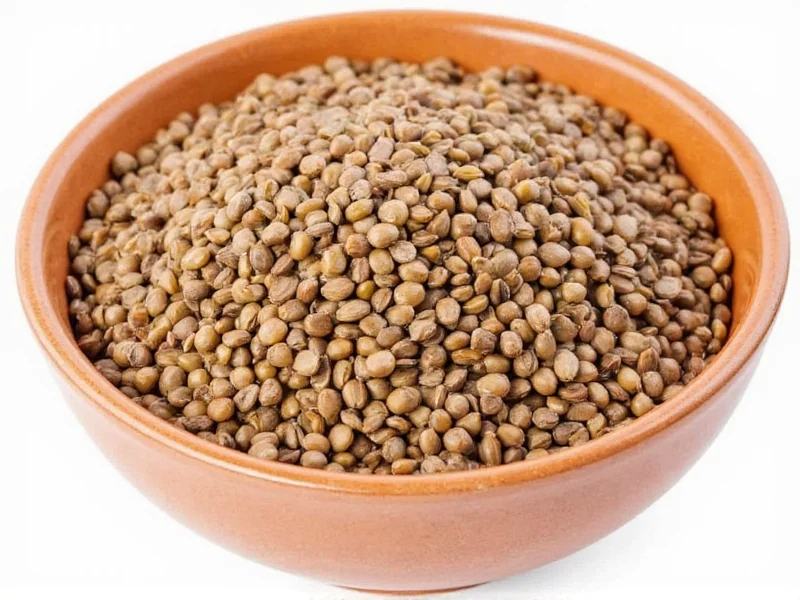Lentils stand out as one of the most protein-dense plant foods available, offering substantial nutritional benefits for vegetarians, vegans, and anyone seeking to diversify their protein sources. Understanding the precise protein content helps with meal planning, fitness goals, and maintaining a balanced diet.
Protein Content Across Different Lentil Varieties
While all lentils provide impressive protein levels, specific varieties show minor differences in their nutritional profiles. These variations matter when tracking precise protein intake for athletic performance or dietary requirements.
| Lentil Type | Protein (per cooked cup/198g) | Protein (per 100g dry) | Calories (per cooked cup) |
|---|---|---|---|
| Green/Brown Lentils | 18g | 26g | 230 |
| Red/Yellow Lentils | 17.9g | 25g | 215 |
| Black/Beluga Lentils | 18.2g | 26.5g | 225 |
| Puy Lentils | 17.5g | 25.5g | 220 |
Understanding Serving Sizes and Protein Density
When evaluating protein content in lentils, serving size context proves essential. Many people misunderstand the difference between dry and cooked measurements, leading to inaccurate nutritional tracking.
Dry lentils contain approximately 25-26 grams of protein per 100 grams, but they expand significantly when cooked, typically tripling in volume and weight. This means that while dry lentils appear more protein-dense by weight, cooked lentils provide a more realistic measure of what you'll actually consume.
For precise tracking, remember that one cup of cooked lentils (about 198 grams) delivers nearly 18 grams of complete protein, along with 15 grams of fiber and essential micronutrients like iron, folate, and manganese.
Comparing Lentil Protein to Other Sources
Lentils offer competitive protein levels compared to both plant and animal sources. Understanding these comparisons helps make informed dietary choices, especially for those following plant-based eating patterns.
When examining protein content in cooked lentils versus other common sources:
- One cup of cooked lentils (17.9g protein) provides similar protein to three large eggs (18.6g)
- Lentils contain more protein per calorie than most grains and many vegetables
- While animal proteins generally offer more protein per serving, lentils provide additional fiber and complex carbohydrates
- Lentils contain all nine essential amino acids, though methionine appears in lower quantities
For vegetarians and vegans, combining lentils with grains like rice creates a complete protein profile with balanced amino acids. This complementary protein pairing represents an effective strategy for meeting daily protein requirements without animal products.
Nutritional Benefits Beyond Protein
The value of lentils extends far beyond their impressive protein content. These legumes deliver a comprehensive nutritional package that supports overall health and wellness.
Lentils rank among the top dietary sources of soluble fiber, which helps regulate blood sugar and supports gut health. They also provide significant amounts of iron (37% of daily value per cup), folate (90% of daily value), and manganese (49% of daily value).
Research shows regular lentil consumption associates with reduced risk of heart disease, improved digestive health, and better blood sugar control. Their low glycemic index makes them suitable for diabetes management, while their high nutrient density supports weight management goals.
Maximizing Protein Absorption from Lentils
While lentils provide excellent protein, certain preparation methods can enhance protein bioavailability and nutritional value.
Soaking lentils before cooking reduces phytic acid content, which can otherwise inhibit mineral absorption. Though lentils don't require soaking like some other legumes, a 2-4 hour soak can improve digestibility.
Cooking lentils thoroughly ensures maximum nutrient availability while maintaining their structural integrity. Avoid overcooking, which can degrade some nutrients. Pairing lentils with vitamin C-rich foods like tomatoes or bell peppers enhances iron absorption from the lentils.
For those concerned about protein completeness, combining lentils with grains like rice, quinoa, or whole wheat provides all essential amino acids. This simple dietary strategy ensures you receive complete protein from plant-based sources.
Incorporating Lentils into Your Daily Diet
Adding lentils to your meals proves simpler than many people realize. Their versatility makes them suitable for numerous dishes across different cuisines.
For breakfast, try adding cooked lentils to savory oatmeal or morning hashes. At lunch, incorporate them into salads, wraps, or as a base for buddha bowls. For dinner, use lentils in soups, stews, curries, or as a meat substitute in dishes like lentil "bolognese" or shepherd's pie.
One effective strategy for increasing protein intake involves replacing half the ground meat in recipes with cooked lentils. This simple swap boosts fiber content while maintaining satisfying texture and flavor, making it an excellent approach for those transitioning to more plant-based eating.











 浙公网安备
33010002000092号
浙公网安备
33010002000092号 浙B2-20120091-4
浙B2-20120091-4